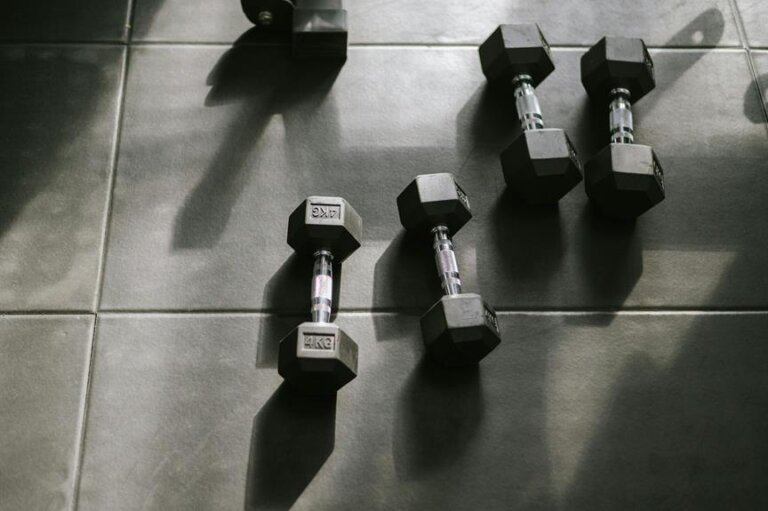The Science Behind High-Intensity Interval Training (HIIT) fitness
Imagine your body as a finely tuned engine. Just like revving up a car to high speeds, High-Intensity Interval Training (HIIT) pushes your body to its limits in short bursts of intense exercise.
But what is it about HIIT that makes it such an efficient workout method? The answer lies in the intricate ways it affects your metabolism, cardiovascular system, hormones, and fat loss mechanisms.
Unlock the science behind HIIT to understand how these short, intense workouts can yield impressive results for your body.
Benefits of HIIT
Unlock the potential of your workouts with High-Intensity Interval Training (HIIT) and reap the numerous benefits it offers. HIIT not only helps you burn more calories in a shorter amount of time but also continues to burn calories even after you've finished your workout. This is known as the afterburn effect or excess post-exercise oxygen consumption (EPOC), where your body consumes more oxygen post-exercise to recover from the intense workout, leading to increased calorie expenditure.
Moreover, HIIT is excellent for improving cardiovascular health. By pushing your heart rate up during intense intervals, you strengthen your heart and improve its overall efficiency. This can lead to a reduced risk of heart disease and improved endurance over time. HIIT is also a time-efficient way to enhance your fitness levels. With shorter workout durations compared to traditional steady-state cardio, you can achieve similar or even better results in terms of endurance and overall fitness. Incorporating HIIT into your routine can help you achieve your fitness goals faster and more effectively.
Impact on Metabolism
Reaping the benefits of High-Intensity Interval Training (HIIT) also includes a significant impact on your metabolism, influencing how efficiently your body burns calories both during and after your workout. HIIT stimulates what's known as excess post-exercise oxygen consumption (EPOC), commonly referred to as the afterburn effect. This means that even after you've finished your HIIT session, your body continues to burn calories at an elevated rate as it works to restore oxygen levels, repair tissues, and return to its pre-exercise state.
Unlike steady-state cardio, HIIT causes a more pronounced increase in your metabolic rate post-exercise. This uptick in metabolism can last for hours, leading to greater overall calorie expenditure compared to traditional steady-state cardio routines. Additionally, HIIT enhances your body's ability to use fat as a fuel source during and after exercise, making it an efficient method for both burning calories and improving metabolic health over time. Incorporating HIIT into your fitness routine can help boost your metabolism, making your body a more efficient calorie-burning machine.
Cardiovascular Adaptations
Have you ever wondered how High-Intensity Interval Training (HIIT) affects your cardiovascular system? Well, let's dive into it.
HIIT leads to significant cardiovascular adaptations that can enhance your heart's efficiency. During HIIT sessions, your heart works harder to pump more blood to your muscles, improving its overall strength. This increased demand on the heart results in improved cardiac output, which is the amount of blood pumped by the heart per minute.
Over time, these intense bursts of exercise can lead to a lower resting heart rate as your heart becomes more efficient at pumping blood. Additionally, HIIT can help lower blood pressure and improve vascular function by promoting the dilation of blood vessels. These adaptations not only enhance your cardiovascular health but also increase your overall endurance and performance.
Hormonal Response to HIIT
Exploring the impact of High-Intensity Interval Training (HIIT) on your hormonal responses sheds light on how this intense workout regimen influences your body's endocrine system. During HIIT, your body experiences a surge in catecholamines, such as adrenaline and noradrenaline, which are responsible for increasing heart rate, blood flow to muscles, and energy availability. These hormones help mobilize stored energy sources, like glycogen and fat, to fuel your muscles during the intense bursts of activity characteristic of HIIT.
Additionally, HIIT has been shown to boost human growth hormone (HGH) levels. HGH plays a crucial role in metabolism, growth, and repair processes within your body. The increased secretion of HGH during and after HIIT sessions can aid in muscle growth, fat metabolism, and overall recovery.
Moreover, HIIT has a positive effect on insulin sensitivity. This means that your body becomes more efficient at utilizing glucose for energy, which can help regulate blood sugar levels and potentially reduce the risk of developing insulin resistance over time.
Fat Loss Mechanisms
Boosting your metabolism through High-Intensity Interval Training (HIIT) can trigger effective fat loss mechanisms in your body. HIIT increases your metabolic rate post-exercise, leading to a state called excess post-exercise oxygen consumption (EPOC). During EPOC, your body requires more oxygen to recover from the intense workout, causing a spike in calorie burning. This phenomenon can contribute significantly to fat loss over time.
Moreover, HIIT promotes lipolysis, the process of breaking down fat stores to release fatty acids into the bloodstream for energy. The high-intensity intervals push your body to tap into fat reserves to fuel your workout, aiding in fat loss. Additionally, HIIT helps preserve muscle mass while primarily targeting fat stores, which is crucial for maintaining a healthy metabolism.
Frequently Asked Questions
How Does HIIT Compare to Traditional Steady-State Cardio in Terms of Muscle Growth and Maintenance?
When it comes to muscle growth and maintenance, HIIT can be more effective than traditional steady-state cardio. It promotes muscle adaptation and growth by challenging your body with intense bursts of activity.
Can Individuals With Certain Health Conditions or Injuries Still Safely Participate in HIIT Workouts?
You can still participate in HIIT with certain health conditions or injuries. Consult your healthcare provider before starting to ensure it's safe for you. Modify exercises as needed, listen to your body, and prioritize your safety during workouts.
Are There Specific Dietary Recommendations or Supplements That Can Enhance the Effects of HIIT Training?
To enhance the effects of HIIT training, it's important to follow a balanced diet rich in protein, healthy fats, and carbohydrates. Hydrate well with water, and consider supplements like protein powders, BCAAs, or creatine for added support.
How Does Age Play a Role in the Effectiveness of HIIT Workouts and Are There Any Age-Related Considerations to Keep in Mind?
As you age, adapting HIIT workouts can maintain effectiveness. Consider your fitness level, any health conditions, and recovery time. Modify intensity and duration to suit your needs. Consult a professional for personalized guidance.
Can HIIT Be Used as a Primary Form of Exercise or Should It Be Combined With Other Types of Training for Optimal Results?
You can absolutely use HIIT as your main exercise routine. It's efficient, boosts metabolism, and enhances cardiovascular health. Mixing it with other workouts can add variety and target different muscle groups for a well-rounded fitness plan.
Conclusion
In conclusion, HIIT is an effective form of exercise that offers numerous benefits such as improved metabolism, cardiovascular health, and fat loss.
The high-intensity intervals push your body to adapt and become stronger, leading to greater fitness gains in a shorter amount of time.
So next time you're looking to maximize your workout in a minimal amount of time, consider incorporating HIIT into your routine for optimal results.





